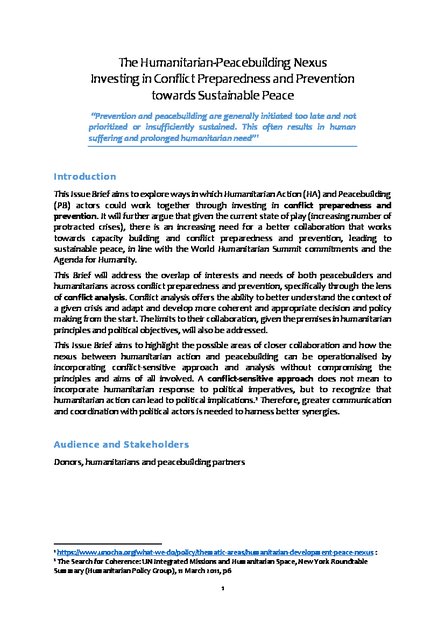
This Issue Brief aims to explore ways in which Humanitarian Action (HA) and Peacebuilding (PB) actors could work together through investing in conflict preparedness and prevention. It will further argue that given the current state of play (increasing number of protracted crises), there is an increasing need for a better collaboration that works towards capacity building and conflict preparedness and prevention, leading to sustainable peace, in line with the World Humanitarian Summit commitments and the Agenda for Humanity.
This Brief will address the overlap of interests and needs of both peacebuilders and humanitarians across conflict preparedness and prevention, specifically through the lens of conflict analysis. Conflict analysis offers the ability to better understand the context of a given crisis and adapt and develop more coherent and appropriate decision and policy making from the start. The limits to their collaboration, given the premises in humanitarian principles and political objectives, will also be addressed.
This Issue Brief aims to highlight the possible areas of closer collaboration and how the nexus between humanitarian action and peacebuilding can be operationalised by incorporating conflict-sensitive approach and analysis without compromising the principles and aims of all involved. A conflict-sensitive approach does not mean to incorporate humanitarian response to political imperatives, but to recognize that humanitarian action can lead to political implications.2 Therefore, greater communication and coordination with political actors is needed to harness better synergies.